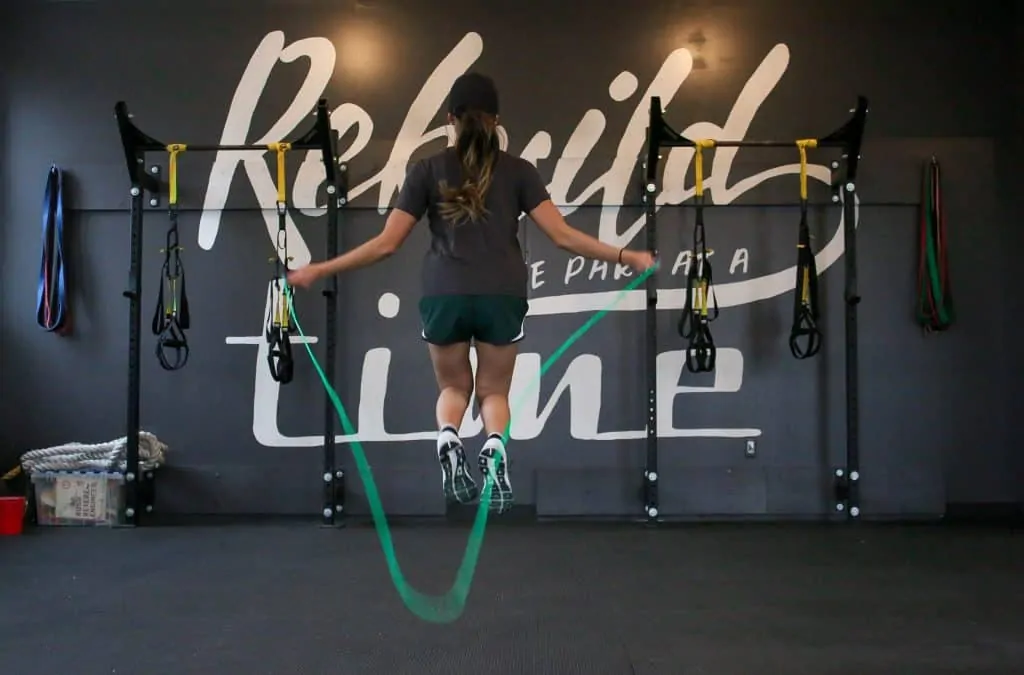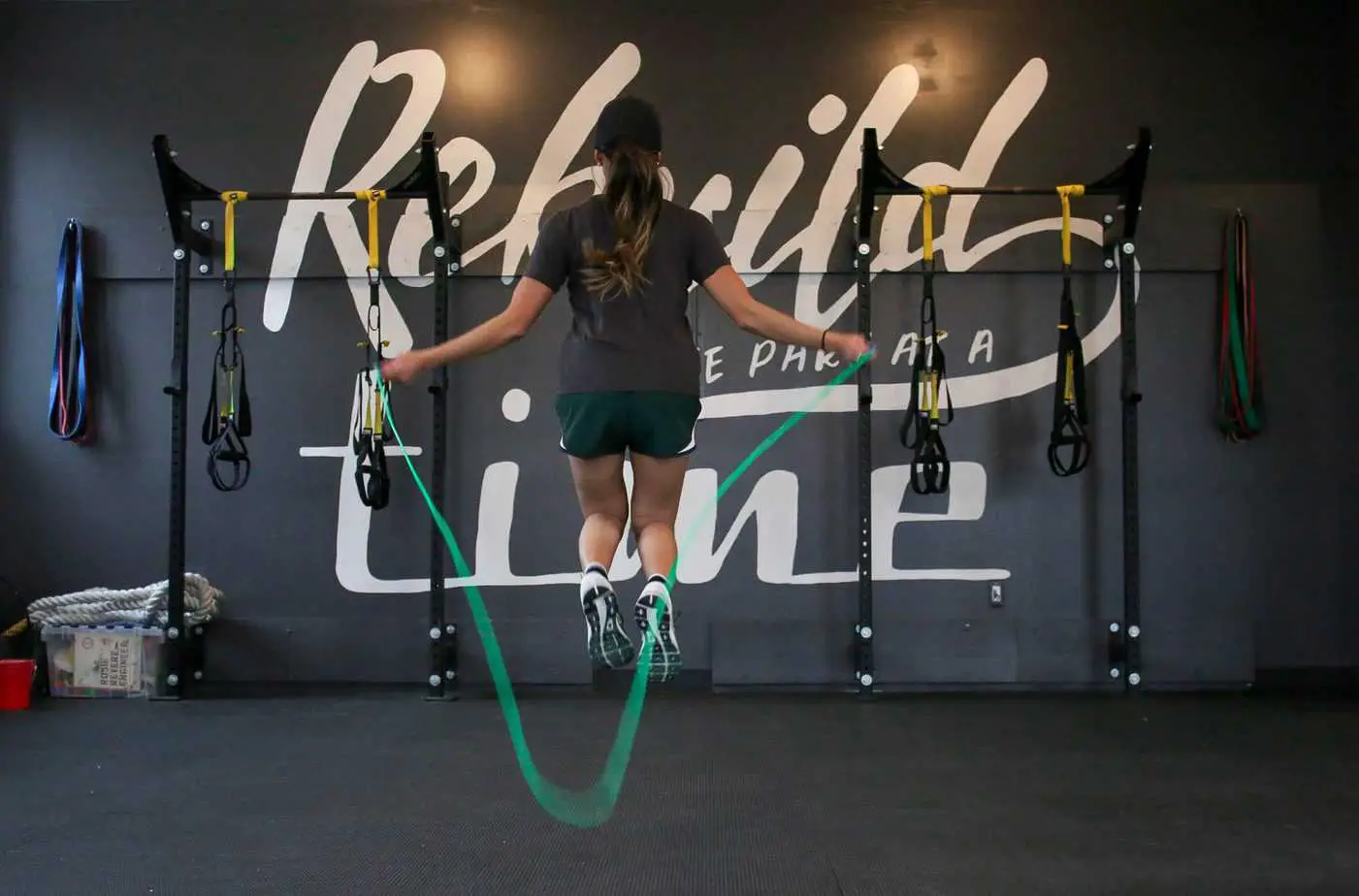HIIT workouts have been all the rage over the past few years in the world of fitness enthusiasts, and for good reason. This type of exercise is great at bringing all of the benefits that you expect from a killer workout. But have you ever wondered how to get HIIT workouts right?
Feeling confident while exercising is easy, but it’s an equally slippery slope when you start doing it wrong. For many, these errors are never fixed. So, we’ve put together a complete guide on how to get HIIT workouts right so that you never have to waste another minute falling behind on your fitness goals.

Table of Contents
How to Get HIIT Workouts Right
What is a HIIT Workout?
HIIT, also known as High Intensity Interval Training, is when you exercise through the combination of short bursts of intensity and intervals where you’re in a period of light rest and recovery.
Your full HIIT workout will ensure that your body is acting at its physical peak while also bringing yourself back down to conserve some energy.
So, why HIIT? Why not just exercise at the full intensity the entire time, or stay at a moderate pace? Well, the unique method of HIIT allows your body to experience a “metabolic disturbance” that allows you to burn even more calories for longer.
Aside from the physical benefits, many people enjoy completing HIIT workouts because it feels easier to distribute energy. Sure, those bursts of high intensity are (and should be) difficult for everybody. But knowing that an interval of light rest is coming quickly can help make the hard parts go by quicker.
Other benefits of HIIT include:
- Benefits to your endurance levels
- Insulin resistance is reduced
- It increases your cardiovascular fitness
- It can increase your metabolism
- Your blood sugar is reduced
- Heart rate and blood pressure is reduced
- Your oxygen consumption is improved
- You can burn fat quicker
Weight loss is a common goal for many people who are interested in changing up their fitness levels. If you are in this group, it’s important to maximize your gains and learn how to get HIIT workouts right. If you do, you might just be able to burn as many as 450 calories in 30 minutes! Let’s dig into how you can get these workouts perfect.
Similar Posts:
- How to Do a HIIT Workout on an Exercise Bike – a Complete HIIT Exercise Bike Guide
- An Intense Treadmill HIIT Workout To Help Crush Your Fitness Goals
- Our Guide on How to Exercise at Home and Lose Weight
- The Best Spinning Apps That Will Keep You in Shape at Home
- How to Use an Exercise Bike Effectively – Your Guide to a Great Workout
How to Get HIIT Workouts Right
The key to learning how to get HIIT workouts right starts in the warm up. This is an essential step, but the actual method of warming up will depend on what kind of exercise you’re doing.
One of the most popular ways to experience HIIT workouts is on a treadmill or exercise bike. A typical warm-up will look like five to ten minutes of jogging or cycling at a slow, conversational pace. For strength training HIIT workouts, you may want to do some stretches, foam rolling, or reps of lighter weights.
Warming up before your workout is important, as it helps get your muscles warmed up. It also jumpstarts your ability to start burning calories and does wonders for your mental game.
Now that you’re warmed up, it’s time to jump into the action! Many folks wonder just what ratio they need when exploring HIIT. For beginners, a 1:2 ratio is a good place to start.
A 1:2 ratio is when you give your body the period of rest that is twice as long as your bursts of intensity. For example, a 1:2 ratio workout on a treadmill could look like this:
- Warm up for 10 minutes
- Sprint at your fastest pace for 60 seconds
- Jog at a moderate pace for 120 seconds
- Sprint at your fastest pace for 60 seconds
- Continue until unable to keep going
- Cool down
Now we must look at what intense actually means. Many folks make the mistake of not going hard enough on their periods of intensity. It’s not just about going harder than you are during your rest periods, but rather it’s about actually striving for intensity.
You need to remember that this workout isn’t going to be long, so you don’t need to pace yourself for that. So, push yourself as close to your limit as you can in order to maintain the exercise.
It can be easy to set your levels of intensity on a treadmill or exercise bike. You can crank up the resistance, incline, or speed with ease. It can be a lot harder if you’re not using a fitness machine, as you need to think about your limits and actually work to maintain them for the entire period of your exercise.
The duration of your HIIT workout will depend on your physical fitness. A minimum time of 20 minutes is recommended. If this is all that your body can endure, then increasing your time may be a primary goal for you. Being able to keep exercising for 45 minutes of HIIT is a common goal to try and achieve.
Once you have completed your HIIT workout of warming up and combining intensity with rest, it’s time to cool down. Your cool down will help level out your heart rate and bring your body back down to a stage of comfort. It should be at a slightly slower pace or level of intensity compared to your warm up, but for a similar length of time.
Your final question: how much HIIT is too much HIIT? We recommend giving your body about 24 hours of rest in between your sessions so that you don’t overwork that intensity. Aim for three to four HIIT workouts a week.
In conclusion, the secrets to learning how to get HIIT workouts done right come with understanding your own body and figuring out what works for you. Make sure that you’re giving it your all in terms of intensity, exercising for long enough, and warming up and cooling down.

